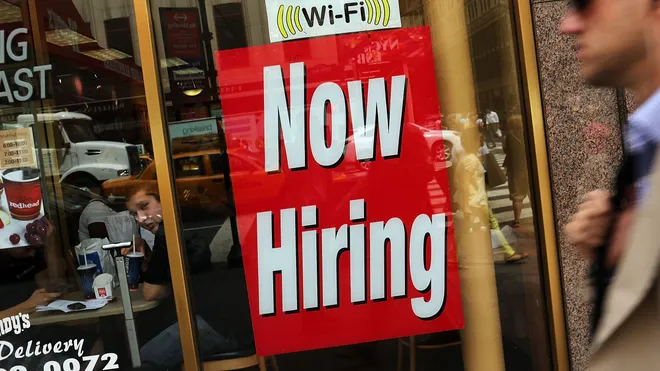
December job growth in the US exceeded forecasts, and the unemployment rate dropped to 4.1%
In December, U.S. job growth saw an unexpected acceleration, with the unemployment rate decreasing to 4.1%. This strong performance in the labor market as the year concluded supports the Federal Reserve’s careful stance regarding interest rate cuts for the upcoming year.
The Labor Department reported on Friday that nonfarm payrolls rose by 256,000 jobs last month, following a downward revision to 212,000 for November.
Economists surveyed by Reuters had predicted an increase of 160,000 jobs in payrolls, following a previously reported surge of 227,000 in November. Estimates for the job count in December varied between 120,000 and 200,000 positions added.
Hiring has decelerated following the significant rate increases implemented by the U.S. central bank in 2022 and 2023. Despite this, the resilience of the labor market, largely due to historically low layoffs, is driving the economy by bolstering consumer spending through increased wages.
The economy is growing significantly faster than the 1.8% rate that Fed officials consider to be the threshold for non-inflationary growth. Concerns are growing that President-elect Donald Trump’s promises to implement or significantly increase tariffs on imports and to deport millions of undocumented immigrants might hinder progress.
Concerns were apparent in the minutes from the Fed’s Dec. 17-18 policy meeting released on Wednesday, which indicated that “most participants remarked that … the Committee could take a careful approach in considering” additional cuts.
Last month, average hourly earnings saw an increase of 0.3%, following a 0.4% rise in November. Over the course of the year ending in December, wages increased by 3.9%, following a 4.0% rise in November.
Although business sentiment improved after Trump’s Nov. 5 election win, fueled by expectations of tax cuts and a more lenient regulatory landscape, economists do not anticipate a significant increase in hiring in the immediate future.
No indications have emerged in business surveys suggesting that companies intend to increase their workforce.
The unemployment rate decreased from 4.2% in November.
The government has updated the seasonally adjusted household survey data, which serves as the basis for the unemployment rate, for the past five years.
Labor market conditions have shown signs of loosening, highlighted by a consistent increase in the number of individuals who have permanently lost their jobs, along with the median duration of unemployment reaching a near three-year high of 10.5 weeks in November since September.
This aligns with the Job Openings and Labor Turnover Survey, indicating that the hiring rate has returned to levels observed at the beginning of the COVID-19 pandemic.
Last month, the Fed reduced its benchmark overnight interest rate by another quarter-point, bringing it to the 4.25%-4.50% range. This marks a total reduction of 100 basis points since the easing cycle began in September.
However, it anticipated just two quarter-point rate reductions this year, in contrast to the four it had predicted in September, recognizing the economy’s resilience and the ongoing high inflation levels. The policy rate experienced an increase of 5.25 percentage points in the years 2022 and 2023.
All Categories
Tags
+13162306000
zoneyetu@yahoo.com


